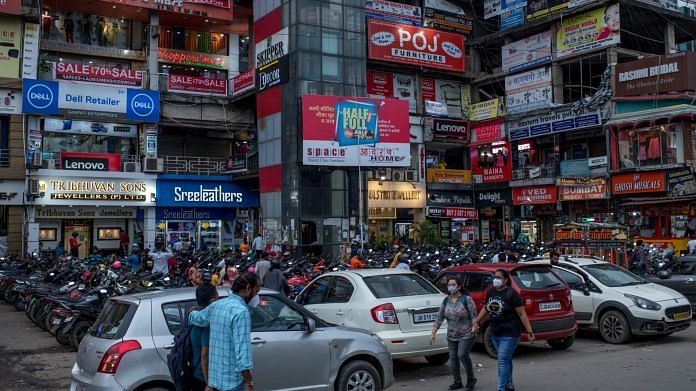The recent events in Sri Lanka have highlighted the incredible importance of good economic management and high growth. The first step in good management is a good strategy. And we cannot have a good strategy if our fundamental beliefs about the world are wrong. One such belief, often repeated, is that India is a large country, so this gives us the ability to grow by focusing on our large domestic market. We have heard this from a number of political leaders—both in power and outside it. At first glance, it even seems right. Surely India is a large market, and so making and selling to fellow Indians is a valid path to grow fast?
The answer, somewhat counter-intuitively, is no. What they fail to see is that India has one of the smallest markets in the world. We must realise that a country’s market size is not being targeted by any one business or economic activity, but by all businesses and all economic activities. The simplest way to see this is to move the population into the denominator and think of the market on a per capita basis. Once we do that, India’s market size shrinks significantly—among the bottom one-fourth of all countries when it comes to GDP per capita.
India needs to look beyond
The myth of India’s market size is particularly damaging because we base our growth strategy on a fundamentally incorrect assumption. A few firms might grow fast by targeting the Indian market—large relative to the firms—but the country can grow fast only when it targets markets that are large relative to all of India.
To illustrate this more clearly, imagine you are the CEO of a large company trying to grow your revenue and strategising on target markets. The company has, let’s say, around 50,000 employees and wants a market to sell the product. In this situation, the employees are the only producers and an incredibly small market, but India, relative to that company, is a large market. This is why we see foreign brands looking to invest in India and set up manufacturing and distribution networks here to sell to Indian consumers.
Now imagine you were handed the role of India’s decision-maker who must grow the country’s GDP fast and, consequently, improve the lives of people. With a population of 1.3 billion in mostly low-income households, all of whom are your ’employees’ whose production you need a market for, should you target the Indian market or some other markets as well? Let’s look at an easy comparison. The Organisation for Economic Co-operation and Development (OECD) has 38 member countries, whose total population in 2019 was about the same as India’s. One way of comparing their market sizes is to compare GDP, which was $2.6 trillion for India and $52.2 trillion, or 20 times more, for OECD in 2020.
For a more direct comparison, take one product that creates the most jobs—clothing. India’s domestic market in clothing was estimated at $55 billion in 2019. Meanwhile, just OECD’s clothing imports for that year were seven times more at $380 billion. China’s clothing exports in 2019 were $150 billion; India’s $17 billion. Just capturing a third of China’s clothing exports would double India’s domestic market. The world merchandise export market was worth $19 trillion in 2019. India’s share was only 1.7 per cent and China’s was 13 per cent.
Also Read: Research shows intermediaries’ role is misunderstood. Local market realities more at play
Path to growth
This is why we need to look at markets that are larger relative to India. This is also why every large low-income country that has grown fast for sustained periods and has become a middle or high-income country in the last 75 years – Japan, Taiwan, South Korea, and China – has done so by focusing on exports. Notice that China, which is larger than India, also needed world markets to grow fast. Even India’s fast growth was driven by a sector that targeted exports to the largest markets—IT services.
However, India has failed to grow fast in labour-intensive manufacturing exports, where it should have a huge advantage, and where growth would have delivered maximum benefits to those who needed it most.
Luckily, the Narendra Modi government has realised the importance of exports in the last few years, setting ambitious targets for different sectors and actively working to negotiate trade deals. Both are huge positive signs. However, targets and trade deals will not translate to results until we dismantle the thicket of rules that make it difficult for Indian industries to operate and compete in the world market.
IT services were successful because our socialist legacy of laws and institutions did not anticipate it. But that legacy was, and remains, hostile to manufacturing. Our political leaders, bureaucrats, industries, labour unions and society at large must shatter their belief that India is a large market, and work together on creating laws and institutions that let us be competitive in the world market. Only that will speed us closer to the day when we can turn this myth into reality.
Rahul Ahluwalia is Director, Foundation for Economic Development. Views are personal.
(Edited by Srinjoy Dey)



